By 2027, over 80% of enterprises will have adopted cloud-based communication solutions, reflecting a rapid shift away from traditional telephony systems. This transition isn’t just about upgrading phones, it’s about rethinking the entire voice infrastructure to meet new demands. Hybrid workforces and digital transformation push organizations to find flexible, scalable communication platforms. Meanwhile, legacy systems face increasing obsolescence and rising maintenance costs.
Choosing between SIP trunking and traditional telephony affects more than call quality. It defines how businesses handle growth, control costs, and maintain resilience. SIP trunking offers integration with modern networks and cloud services, consolidating voice and data over a single connection. Traditional telephony remains relevant in specific use cases but struggles with scalability and agility.
This article explores the core differences through real data, cost comparisons, and business impact. It highlights how infrastructure choices shape future readiness and operational agility, guiding decision-makers beyond simple feature lists to strategic investments that align with evolving communication needs.
Key Takeaways
- SIP trunking consolidates voice and data over IP, reduces call and infrastructure costs, and scales rapidly, making it ideal for hybrid workforces, cloud integration, and global expansion.
- Traditional telephony remains valuable in power- or internet-sensitive environments (e.g. hospitals, emergency services), but suffers from high maintenance, limited scalability, and phase-out risks.
- Choosing the right system requires evaluating scalability, compliance needs, network readiness, and disaster recovery plans, SIP is future-proof, while PSTN suits niche legacy use cases.
Beyond the Buzzwords: What SIP Trunking and Traditional Telephony Really Are
Choosing between SIP trunking and traditional telephony starts with understanding what each option represents beyond the jargon. These are not just communication tools; they form the backbone of how organizations connect internally and externally. The decision affects infrastructure design, operational flexibility, and future-proofing.
SIP trunking merges voice and data traffic into one streamlined connection, supporting modern communication needs. Traditional telephony relies on physical lines and hardware that shaped business communications for decades. Grasping these core differences clarifies which system fits specific operational demands and growth plans.
Next, let’s explore SIP trunking in straightforward terms, followed by a clear view of traditional telephony’s architecture and where it still holds value.
SIP Trunking, Explained Without Fluff
SIP trunking uses the Session Initiation Protocol (SIP) to connect an organization’s IP-based phone system (IP PBX) to the Public Switched Telephone Network (PSTN) via the internet. This method replaces physical phone lines with virtual channels, carrying voice calls over data networks.
It combines voice and data into a single pipe, allowing businesses to consolidate infrastructure and reduce costs. This setup fits naturally with cloud-based Unified Communications as a Service (UCaaS) platforms and integrates smoothly with Software-Defined Wide Area Networks (SD-WAN). Both improve call quality and network control.
For a visual overview of how SIP trunking connects your communication systems, see this detailed diagram: SIP Trunking Visual Guide.
Traditional Telephony: Legacy Infrastructure Still in Play
Traditional telephony relies on the Public Switched Telephone Network (PSTN), built on circuit-switched technology. It uses physical copper wires and dedicated hardware to establish voice connections. Each call reserves a specific circuit for its duration, ensuring consistent quality but requiring substantial infrastructure.
This setup demands considerable maintenance and hardware investment. Physical lines and switching equipment must remain operational, limiting flexibility and slowing upgrades. Still, many rural areas depend on PSTN due to limited internet options. Regulated industries often require its power-independent nature for critical communications. Facilities like hospitals and emergency services trust PSTN for guaranteed uptime during power or network outages.
Digital legacy systems such as Integrated Services Digital Network (ISDN) and Primary Rate Interface (PRI) extend traditional telephony’s capabilities. They offer multiple channels over a single line, improving capacity while preserving circuit-switched design. Though fading, ISDN and PRI remain active in sectors with strict regulatory demands or where migration costs delay full transition to IP-based alternatives.
The Real Differences That Impact Business Outcomes
Understanding the technical details only scratches the surface. The real test lies in how each system affects budgets, deployment, growth, and risk management. These differences shape the overall business impact of communication infrastructure choices.
SIP trunking and traditional telephony create contrasting operational profiles. They differ in cost structure, speed of rollout, flexibility, resilience, and regulatory compliance. Each factor influences business agility and future readiness.
Let’s explore these critical areas one by one to uncover how they drive measurable outcomes for organizations.
Cost Modeling: Predictable Bills vs Scalable Savings
| Cost Element | Traditional Telephony | SIP Trunking |
| Initial Investment | High CapEx: physical lines, PBX equipment | Lower CapEx: uses existing IP networks |
| Operational Costs | Fixed monthly line rentals, separate call charges | OpEx model: pay for channels and usage |
| Call Charges | Higher, especially for long-distance | Significantly lower, especially international |
| Maintenance | Regular hardware upkeep, line repairs | Minimal hardware maintenance; software updates |
| Scalability Costs | Expensive and slow to add lines | Rapid channel scaling with minimal cost |
Real-world averages show a SIP channel costs around $20–$30 per month, while traditional lines may exceed $40 monthly, not including costly upgrades or repairs. Long-distance calls over SIP trunking can cut costs by up to 60% compared to legacy systems.
Infrastructure Demands and Deployment Speed
SIP trunking setups often complete within days. Existing internet infrastructure carries voice traffic, and softphones or IP PBX integration require minimal hardware. Traditional telephony upgrades demand weeks or even months. Physical lines must be installed, tested, and sometimes rewired, slowing deployments and increasing downtime risk.
SIP depends on stable LAN/WAN connectivity and adequate bandwidth. Organizations lacking network readiness may face upfront IT investment. Traditional telephony relies on fixed hardware but offers predictable performance regardless of data network status.
Scalability and Geographic Flexibility
Adding or removing SIP channels happens remotely in minutes. Businesses expand capacity instantly to meet seasonal demand or new office locations, even internationally. Geographic restrictions vanish because SIP isn’t tied to physical lines.
Traditional telephony binds lines to physical addresses. Moving or scaling requires new installations and permits, limiting speed and increasing costs. Expanding across regions or countries often multiplies infrastructure challenges.
Resilience and Disaster Recovery
SIP trunking offers multiple failover options: cloud rerouting, multi-location Points of Presence (PoPs), and configurable call forwarding. These layers reduce downtime and ensure calls reach users during outages.
PSTN lines face single points of failure. A cut copper wire or local exchange outage often means total loss of service. Disaster recovery requires costly redundant circuits and manual rerouting.
| SIP Redundancy Mechanisms | Description |
| Cloud Failover | Automatic reroute to cloud PBX |
| Multiple PoPs | Geographic distribution of call paths |
| Call Forwarding Rules | Redirects calls to mobile or alternate numbers |
Regulatory and Compliance Considerations
Traditional telephony and SIP trunking both support key standards but differ in flexibility. PSTN often aligns with legacy compliance needs, including robust lawful intercept and emergency services support (911, 112).
SIP supports HIPAA, PCI-DSS, and other modern regulations through encryption and secure session management. However, providers vary in their ability to meet strict requirements. Lawful intercept and emergency call accuracy can present challenges, depending on network setup and geolocation capabilities.
These differences guide companies toward solutions that fit their strategic priorities, operational realities, and risk profiles. The following sections will deepen this analysis with case studies and practical insights.
SIP Trunking: Data-Driven Advantages
As businesses demand more from communication systems, SIP trunking delivers clear, measurable benefits. These go beyond cost savings, affecting productivity, management, and workforce flexibility. Real-world studies confirm that SIP trunking not only pays for itself quickly but also supports evolving business models with remote and hybrid teams.
Let’s break down the data-driven advantages that make SIP trunking an increasingly strategic choice.
ROI Benchmarks
Research shows most organizations recoup their SIP trunking investment within 6 to 12 months (Forrester, 2023). Savings stem from lower call charges, reduced hardware expenses, and streamlined operations. Total Cost of Ownership (TCO) over a 3–5 year horizon often drops by 30% or more compared to legacy telephony.
Reduced capital outlay and the shift to operational expenses allow businesses to reallocate budgets faster. Flexibility in scaling channels without costly infrastructure upgrades further improves ROI as communication needs grow or shift.
Unified Communications + Remote Workforce Enablement
SIP trunking integrates seamlessly with leading platforms like Microsoft Teams and Zoom Phone. This connection brings voice into the broader unified communications ecosystem. Employees gain access to softphones, mobile apps, and Bring Your Own Device (BYOD) options.
These features enhance geographic flexibility, letting teams work securely from anywhere. SIP trunking removes traditional telephony’s location constraints, supporting hybrid work models and expanding collaboration beyond office walls.
Centralized Management and Analytics
Modern SIP providers offer portal-based controls and real-time dashboards. Administrators can monitor call quality, usage patterns, and network health at a glance. Detailed call analytics identify issues, optimize routing, and improve service.
Legacy telephony relies on vendor ticketing and slow, manual support processes. SIP trunking’s centralized management speeds troubleshooting and empowers IT teams with data-driven insights. This transparency drives continuous improvement and better user experiences.
Together, these advantages highlight how SIP trunking transforms voice infrastructure into a strategic asset. The next sections will explore where traditional telephony still holds value and what to consider when choosing the right system.
Where Traditional Telephony Still Wins
Despite rapid adoption of IP-based communication, traditional telephony retains clear strengths. Its design and reliability suit specific use cases that demand absolute uptime and simplicity. Understanding where legacy systems outperform newer technologies helps organizations build balanced, resilient communication strategies.
Let’s explore the scenarios where traditional telephony remains the preferred choice.
Resilience Without Power or Internet
Plain Old Telephone Service (POTS) lines operate independently of local power or internet. They draw power directly from the telephone exchange, allowing calls even during outages. This reliability proves vital for emergency systems, alarm monitoring, and backup communication lines.
Hospitals, emergency responders, and critical infrastructure often rely on POTS for fail-safe voice connectivity. Unlike SIP trunking, which depends on electricity and data networks, traditional lines maintain service when those networks fail. This resilience supports regulatory requirements and life-safety standards.
Minimal Configuration, Universal Compatibility
Traditional telephony requires almost no setup. Analog phones plug directly into the wall and work immediately without software, IP configuration, or network adjustments. This plug-and-play simplicity reduces training and IT support needs.
Government agencies, elderly care facilities, and industrial sites frequently value this ease. Devices built decades ago still function without modification. In environments where technology upgrades face hurdles, whether budget, security, or user capability, traditional telephony provides dependable, straightforward communication.
While SIP trunking suits dynamic, cloud-driven organizations, traditional telephony’s robustness keeps it essential in critical and legacy-dependent sectors. The next section will discuss often-overlooked drawbacks of both systems to aid balanced decision-making.
Disadvantages Often Overlooked
Every technology comes with trade-offs. While SIP trunking and traditional telephony each offer clear strengths, they also carry hidden challenges. Ignoring these pitfalls can lead to costly disruptions and unexpected expenses.
Understanding these limitations helps businesses choose solutions that align realistically with their infrastructure and growth plans. Let’s examine the lesser-known drawbacks that often escape initial consideration.
SIP: Not a Silver Bullet
SIP trunking depends heavily on network quality. Sufficient bandwidth, low jitter, and minimal latency prove critical to maintain call clarity. Complex firewall setups can create connection issues, requiring expert configuration.
Fax over IP remains problematic. The T.38 protocol improves reliability but doesn’t guarantee consistent fax performance. Emergency services calls sometimes face location accuracy problems because SIP routes through IP networks, complicating geolocation.
Such challenges mean SIP requires ongoing network management and investment to meet demanding communication needs.
Traditional Telephony: Inflexibility = Long-Term Risk
Legacy telephony relies on copper infrastructure facing steady degradation. Many providers plan copper line retirements, limiting future support and forcing expensive upgrades.
Scaling traditional systems costs multiply rapidly. Adding or moving lines involves physical installation, permits, and maintenance, causing delays and inflated capital expenses.
These inflexibilities translate to higher long-term risk and cost inefficiency for growing organizations.
Recognizing these disadvantages sharpens the decision-making process. The next section will guide how to evaluate communication patterns and requirements to pick the best fit.
Choosing the Right System: A Business-Focused Framework
Picking between SIP trunking and traditional telephony demands more than technical knowledge. Businesses must align communication choices with operational realities, growth plans, and compliance needs. Evaluating core patterns and provider capabilities ensures investments support long-term success.
This section offers a practical framework to guide decision-makers through this process.
Evaluate Communication Patterns and Requirements
Assessing current and future needs helps reveal the best fit. Use this checklist to structure the evaluation:
| Factor | Questions to Ask | Impact on Choice |
| Number of Sites | How many offices or locations? | SIP suits multi-site setups easily |
| Remote Workforce | What percentage works remotely? | SIP supports geographic flexibility |
| Compliance Concerns | Are HIPAA, PCI-DSS, or other rules relevant? | Check provider’s compliance support |
| Call Volume & Growth | Expected call volume and growth rate? | Scalability affects cost and agility |
| Network Readiness | Is data infrastructure reliable? | SIP requires stable IP networks |
| Disaster Recovery Needs | What are downtime tolerances? | SIP offers advanced failover options |
Matching answers to these points narrows down which system will best support current operations and scale smoothly.
What to Look for in a SIP Trunk Provider
Choosing the right SIP provider matters as much as the technology itself. Key features to prioritize:
- Service Level Agreements (SLAs): Guarantees on uptime and call quality.
- 24/7 Support: Around-the-clock expert assistance to resolve issues fast.
- Geographic Points of Presence (PoPs): Localized infrastructure reduces latency and improves reliability.
- Quality of Service (QoS) Guarantees: Assures consistent voice quality even under network load.
- Fraud Protection: Measures to detect and prevent unauthorized call usage.
Watch out for red flags like resellers without network control or unclear SLAs. Such providers may lack the capacity to deliver stable, secure services.
With a clear framework and trusted partners, businesses can confidently select voice infrastructure that aligns with strategic goals. The next section will explore emerging trends shaping the future of communication systems.
What’s Next: The Future of Voice Infrastructure
Voice infrastructure continues to evolve rapidly, driven by new technologies reshaping how businesses communicate. AI-powered call routing promises smarter, faster connections, dynamically adjusting to caller needs and network conditions. These systems learn patterns and optimize paths without manual intervention.
SIP over 5G networks will unlock unprecedented mobile voice quality and low latency. Combining SIP’s flexibility with 5G’s speed enables true seamless communication for remote and mobile teams, extending enterprise reach.
WebRTC further blurs lines between voice, video, and web applications. It allows browsers and apps to handle calls directly, removing traditional hardware constraints. This integration accelerates adoption of unified platforms, supporting richer interactions.
Meanwhile, the Public Switched Telephone Network (PSTN) faces phase-out. The UK plans to retire ISDN by 2025, signaling a global shift away from legacy circuits. Businesses relying on traditional telephony must prepare for migration to IP-based alternatives.
SIP trunking forms the backbone of these trends, enabling cloud-based Unified Communications as a Service (UCaaS) and Contact Center as a Service (CCaaS). Its adaptability supports evolving customer engagement and collaboration strategies, making it essential for future-ready organizations.
Conclusion – Infrastructure That Scales With You
Choosing between SIP trunking and traditional telephony goes beyond technology. It shapes how your business adapts, grows, and competes in a rapidly changing landscape. The right voice infrastructure supports strategic goals, not just daily calls.
Think about your communication needs as a foundation for innovation and resilience. Consider how flexible, scalable, and future-ready your systems must be to meet evolving demands.
Taking a proactive approach to assess your current setup unlocks new opportunities. Explore readiness, identify gaps, and weigh costs against long-term value.
Partnering with experts like didlogic can simplify this process. Request a tailored readiness consultation or cost assessment today to ensure your infrastructure grows with you—not holds you back.
Further Reading
- What is SIP trunking?
- SIP trunking capacity
- SIP trunking security
- Differences between SIP trunking and cloud PBX
- Differences between SIP trunking and IP trunking
- SIP session vs SIP trunk
- Differences between SIP Trunking and Session Border Controllers
- SIP Trunking vs PSTN
- SIP Trunking vs H.323
- Advantages of SIP Trunking
- SIP Trunk Costs
- SIP Trunking Migration Plan
- SIP Trunking Requirements










